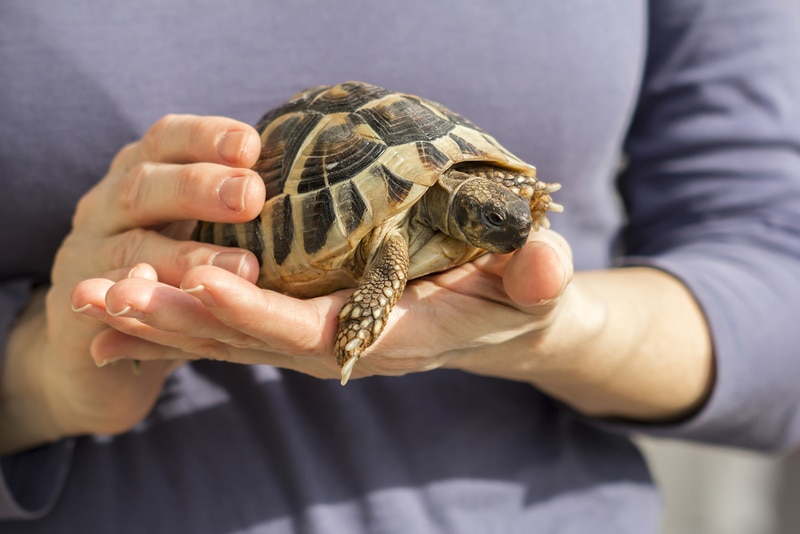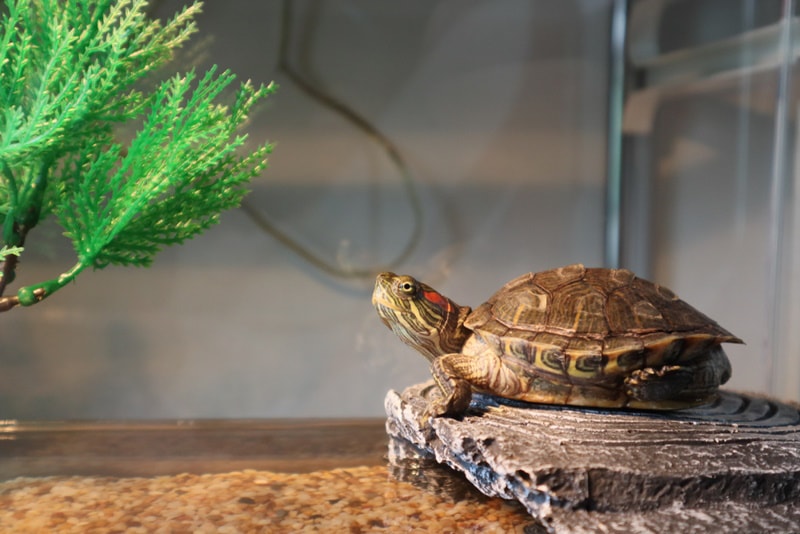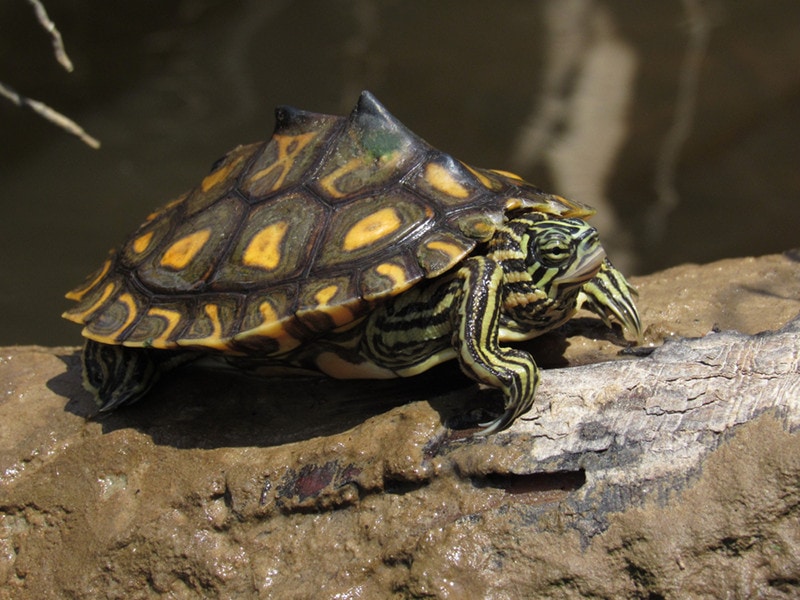How Long Do Hermann’s Tortoises Live: Vet Reviewed Lifespan, Data & Care
Updated on
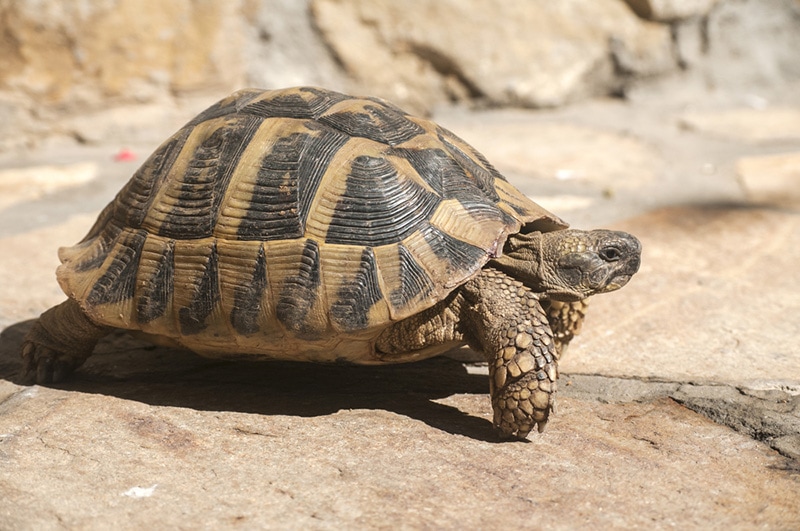
Click to Skip Ahead
Tortoises have become increasingly popular as pets with many different species from all over the globe available in the pet trade. Not only are they incredibly cute creatures, but they are very interesting to observe. Since most households aren’t well equipped to house and care for larger species, it makes smaller to medium-sized tortoises the appropriate choice for many.
The Hermann’s Tortoise (Testudo hermanni) of which there are two subspecies, is considered a medium-sized species, only reaching around 5 to 8 inches in length. They also have beautiful vibrant yellow shells with dark patterning, making them a sought-after species for tortoise keepers. Tortoises have a reputation for being long-lived, and if you are considering Hermann’s tortoise, you may be wondering how long of a lifespan you can expect from the species. On average, Hermann’s tortoises live for 60-70 years! Keep reading to find out more.
Hermann’s Tortoise Average Lifespan
The average lifespan of a pet Hermann’s tortoise often ranges from 60 to 70 years, though some have survived as long as 100 years or more. While pet tortoises do not face the same threats as their wild counterparts, their longevity is dependent on proper care and husbandry practices.
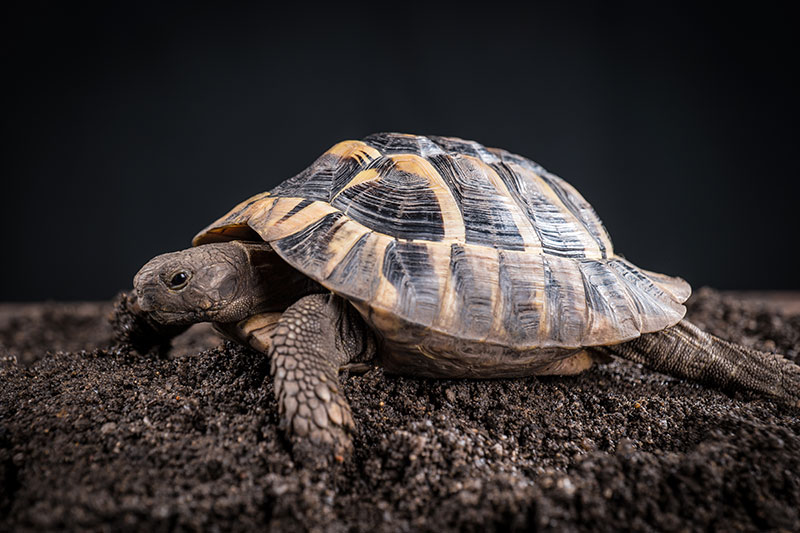
How Long Do Hermann’s Tortoises Live in the Wild?
Hermann’s Tortoises are native to southern Europe and the northern coast of the Mediterranean Sea. The western populations are found throughout northeastern Spain, southeastern France, and southern Italy, while eastern populations are found in Serbia, Kosovo, North Macedonia, Romania, Bulgaria, Albania, Turkey, and Greece.
Unlike captive tortoises, young, wild Hermann’s tortoises are incredibly vulnerable to predators as their shells are not fully developed until about 8 years of age. While captive specimens may have a longer lifespan of up to 70 years or more, adults can also fall victim to predation and other environmental threats, causing their average lifespan in the wild to be around 30 years of age.
Why Do Some Hermann’s Tortoises Live Longer Than Others?
1. Feeding & Diet
Hermann’s tortoises are herbivores and will eat a variety of leafy greens and vegetables, and a limited amount of fruits. Their diets are meant to be rich in fiber and calcium while being low in protein. There are commercially available pellet foods made specifically for tortoises as well, but they will require a diet rich in fresh vegetation, organic if possible, some keepers advise against pellets.
Since a well-balanced and nutritious diet is incredibly important for the tortoise’s overall health and longevity, keepers need to understand their dietary needs and which foods are safe and which are unsafe to feed. Always consult your exotics veterinarian for any dietary guidance and to ensure you are feeding the correct diet as well as offering any additional supplements as needed.

2. Environment
Hermann’s tortoises can be kept either in an indoor or outdoor enclosure, though hatchlings and juveniles should always be raised indoors until they reach a size in which they are less vulnerable to both predators and the elements. Outdoor enclosures should only be used if the environmental conditions of your area are suitable for your tortoise.
Since Hermann’s tortoises are quite active and love to roam, they will need as much space as possible. Glass terrariums are never recommended, as they can be very stressful for them, so always opt for an enclosure that is designed for tortoises or at least has solid siding.
If kept outdoors, the enclosure should be secure enough to keep the tortoise inside and potential predators outside. In most parts of the United States, outdoor enclosures are often only suitable from about April to October when the weather is warmer. Tortoises should be transferred to an indoor enclosure when temperatures begin to drop.
In the wild, the Hermann’s Tortoise lives in arid, rocky landscapes, grasslands, and dry forests where they like to wander and burrow. It’s a good idea to provide natural decor within their habitat to mimic their natural environment and provide them with stimulation and security.
3. Care
It’s important to keep temperature and humidity within suitable ranges for your Hermann’s tortoise. Babies will require warmer temperatures than adults, but on average the ambient daily temperature should remain between 75- and 90-degrees Fahrenheit with nighttime temperatures as low as 65 degrees.
UVB lighting is an absolute must so they can properly synthesize vitamin D, which aids in the absorption of calcium that is vital for growth, development, and the health of their bones, including the shell. A light can be used for the basking spot, which can be kept at approximately 90 degrees Fahrenheit.
Since these tortoises are from more arid regions, their humidity levels can be kept between 40 and 60 percent, though hatchlings need higher humidity, around 75-85 percent. Both temperature and humidity can easily be monitored with a thermometer and a hygrometer.
Clean water should be available at all times within the enclosure and should be changed out each day. Daily soaking for 10 to 15 minutes at knee depth is highly recommended for babies up to 18 months of age, so make sure to speak with your veterinarian if you have any questions about soaking and how to keep your tortoise properly hydrated. Adult tortoises will also need the opportunity to bathe once or twice a week.
4. Cleaning
A Hermann’s tortoise enclosure should be spot cleaned daily or as needed to remove any waste and uneaten food and change out the water. A full, deep clean of the enclosure and replacement of substrate should be done every 1 to 2 months or as needed.
A clean environment is very important for the tortoise’s overall health, as unclean conditions can lead to health conditions such as shell rot, bacterial or fungal infections, and respiratory infections, all of which can be fatal if left untreated.

5. Pairing/Breeding
If a sexually mature male and female are kept together, they may end up breeding naturally. For keepers that plan to pair, it’s important that you only pair mature, healthy individuals under ideal environmental conditions for the species and are prepared to incubate the eggs and care for the hatchlings.
A gravid female will need access to a nesting box so that she can comfortably lay her eggs. Most Hermann’s tortoises will lay an average clutch of 1 to 4 eggs. The eggs will need to be removed and carefully placed in an incubator set at the ideal temperature and humidity conditions for the eggs to develop successfully.
6. Healthcare
Regardless of what kind of pet you own, you should always establish care with a local veterinarian to ensure their overall health and well-being. Since tortoises are considered exotic animals, you will need to find a licensed veterinarian with experience in dealing with tortoises.
Not only can your veterinarian answer any care and husbandry questions you may have, but if anything unusual occurs or you have concerns about your tortoise’s health, you can reach out for prompt treatment.
The Life Stages of a Hermann’s Tortoise
Egg Stage
Once the female Hermann’s tortoise lays her clutch of eggs, which typically consists of 1 to 4 eggs, she will carefully bury the eggs to hide them from potential predators. In captivity, keepers will allow her to finish and will then exhume the eggs and place them in an incubator.
The baby tortoises will develop within the egg for approximately 56 to 102 days, depending on conditions, before hatching.
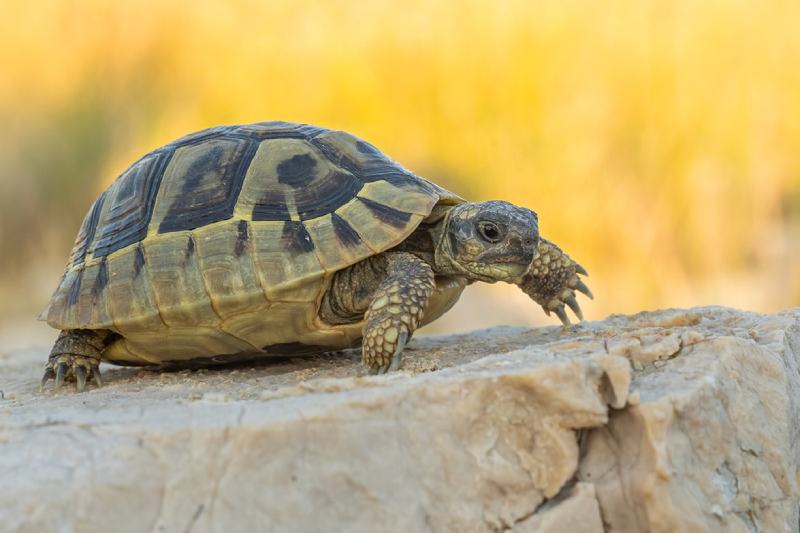
Hatchling Stage
The hatchlings will use their egg tooth to emerge from the egg, and there’s a chance not all hatchlings will emerge at the same time. It can take hours, days, or even up to a week for a hatchling to successfully exit the egg.
Hatchlings will have pliable shells and will exhibit the remnants of the yolk sac immediately after emerging. They may even have a deformed appearance, which will usually correct itself in the coming week or so.
Hatchlings have much duller coloration but by the time they reach about 1 year of age, the shell will have begun to harden, and they will have begun displaying more vivid color.
Juvenile
By the time the tortoises reach 2 years old, they are considered juveniles. The juvenile stage lasts until about age 5 and during this time the shell continues to harden, and their coloration starts to pop.
Sub Adult
Between ages 5 and 8 the Hermann’s tortoise is considered a sub-adult. At this time, the shell will begin showing its adult patterning and color while the shell becomes very hard.
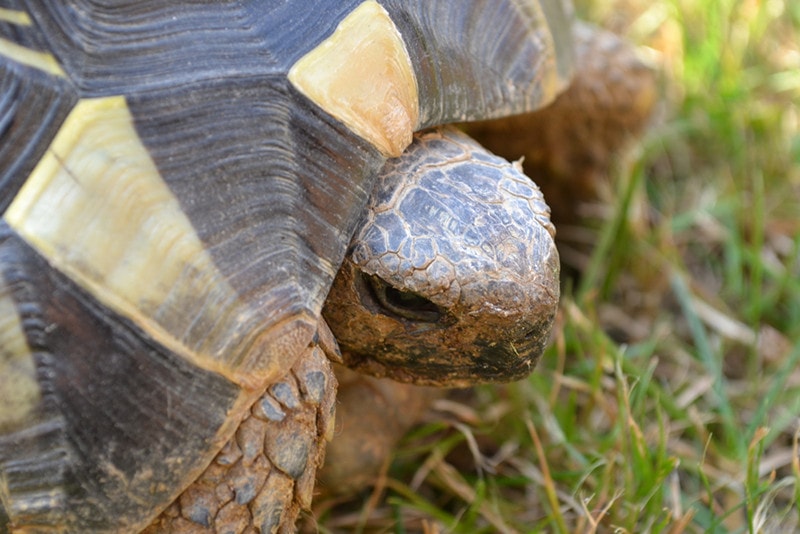
Adult
Hermann’s tortoises are often considered adults when they reach 8 years of age. Their shells will be solid bone and they will have developed their vibrant adult coloration and pattern. Adults reach an average size of 5 to 8 inches in length and weigh between 7 and 9 pounds, with females often being slightly larger than males.
How to Tell Your Hermann’s Tortoise Age
The only way to keep good track of your Hermann’s tortoise’s age is by keeping a record of the date they hatched. You can make an educated guess on their age based on their size, shell coloration, and patterning but unless you know when the tortoise hatched, it’s impossible to narrow their age specifically.
Conclusion
Pet Hermann’s tortoises have an average lifespan of 60 to 70 years, though certain specimens have been recorded reaching over 100 years of age. This is much longer than their average lifespan in the wild, which is only about 30 years. For pet tortoises, proper care and husbandry is key to keeping them healthy and allowing them to live up to their potential longevity. Make sure to do your research and be well prepared to care for these amazing animals before bringing one into your home and always consult a veterinarian for your pet’s health needs.
Featured Image Credit: Alexander Varbenov, Shutterstock


